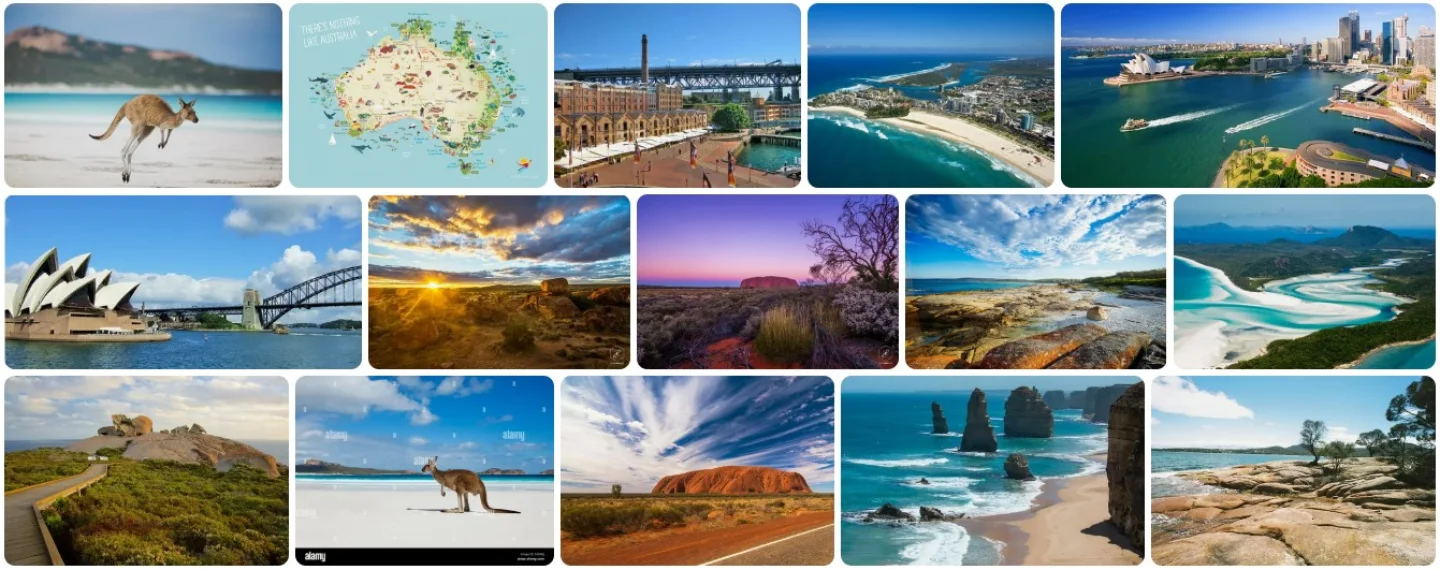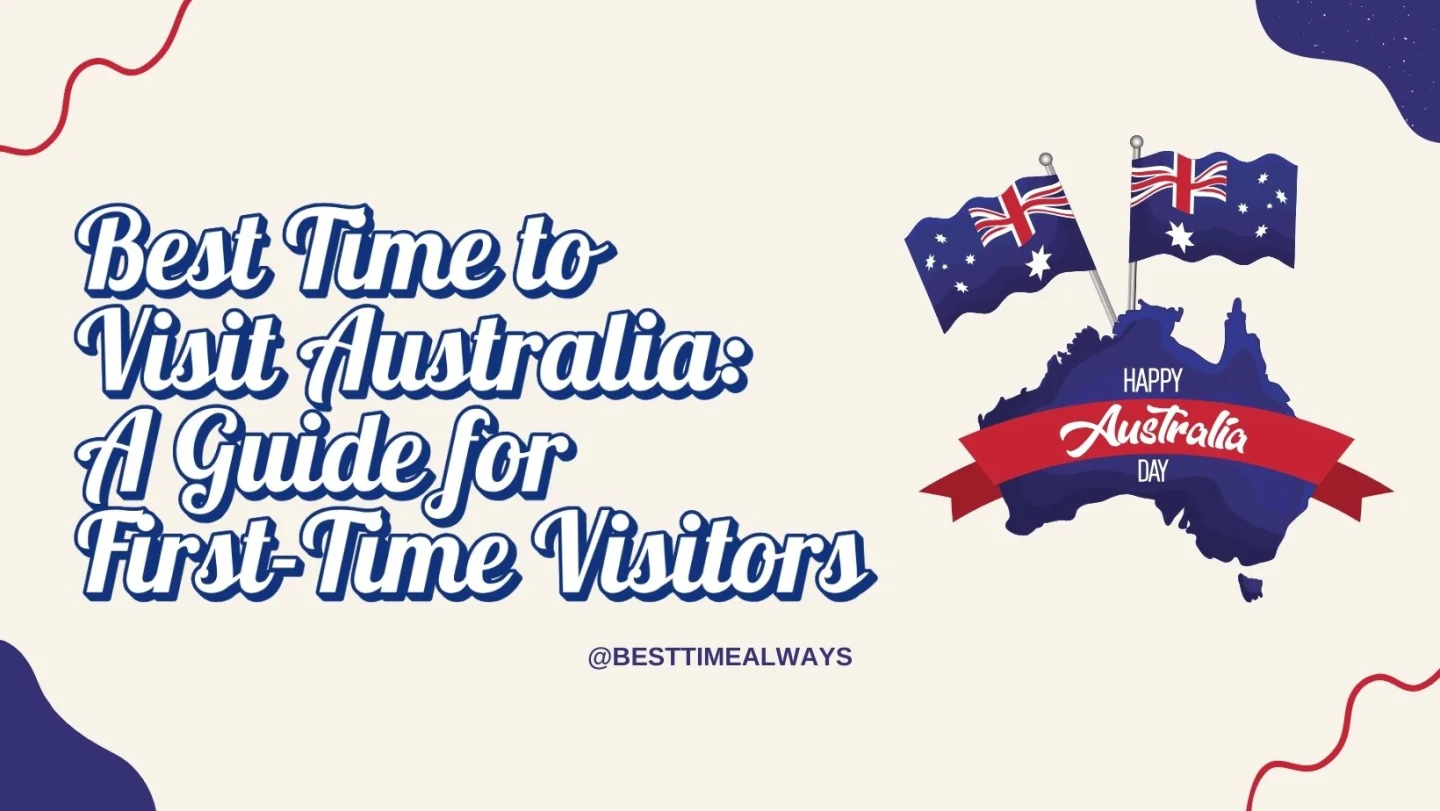Australia, often called the land Down Under, is a bucket-list destination for travelers worldwide. With its breathtaking landscapes, unique wildlife, vibrant cities, and rich cultural heritage, it’s no surprise that millions visit this vast continent annually. However, planning your first trip to Australia can feel overwhelming, especially when deciding the best time to visit. Due to its massive size—spanning over 7.6 million square kilometers—weather and climate vary dramatically across regions. In this detailed Australia travel guide, we’ll explore the seasons, regional differences, special events, and practical tips to help you pinpoint the perfect time for your adventure.
Climate Overview
Australia’s diverse geography results in a range of climates, each influencing the best time to visit specific areas:
- Northern Australia: Features a tropical climate with a wet season (November to April) marked by heavy rain and humidity, and a dry season (May to October) with clear skies and cooler temperatures.
- Southern Australia: Experiences a temperate climate with four distinct seasons—summer, autumn, winter, and spring—similar to parts of Europe or North America.
- Central Australia: Known for its desert climate, with scorching days, chilly nights, and minimal rainfall year-round.
- Eastern Coast: Enjoys a subtropical climate, characterized by warm, humid summers and mild winters.
- Western Australia: Ranges from Mediterranean conditions in the southwest to tropical in the north.

This climatic diversity means the ideal time to visit depends heavily on where you’re headed and what you want to experience.
Seasonal Breakdown
Australia’s seasons run opposite to those in the Northern Hemisphere, so summer here aligns with winter in places like the US or Europe. Let’s break down what each season offers.
Summer (December to February)
Summer brings hot, sunny days across most of Australia, with average temperatures ranging from 25°C to 35°C (77°F to 95°F). It’s peak season for coastal areas, but the north faces its wet season with torrential rains.
- Pros: Perfect for beach lovers—with over 10,000 beaches, Australia is a paradise for swimming, surfing, and sunbathing. Major events like the Australian Open in Melbourne (January) and Sydney’s New Year’s Eve fireworks draw huge crowds.
- Cons: Intense heat in central and northern regions can be uncomfortable. The wet season in Queensland and the Northern Territory may cause flooding, limiting access to attractions like the Great Barrier Reef.
Autumn (March to May)
Autumn offers milder weather, with temperatures averaging 15°C to 25°C (59°F to 77°F), and less humidity, making it a favorite for outdoor exploration.
- Pros: Ideal for hiking and sightseeing. The Blue Mountains near Sydney showcase stunning autumn foliage, and national parks are less crowded.
- Cons: Southern areas like Tasmania start cooling off, especially by May, so pack layers.
Winter (June to August)
Winter is mild by global standards, with temperatures between 10°C to 20°C (50°F to 68°F), though southern regions can get chilly, and the Alps see snow.
- Pros: The dry season makes it the best time to visit northern Australia, including the Great Barrier Reef and Kakadu National Park. Skiing is available in the Australian Alps near Victoria and New South Wales.
- Cons: Coastal areas in the south, like Melbourne, can feel cold and windy, and some attractions may have shorter hours.
Spring (September to November)
Spring is a vibrant season with wildflowers blooming and temperatures ranging from 15°C to 25°C (59°F to 77°F). Wildlife becomes more active, too.
- Pros: Great for exploring both coast and inland. Events like the Melbourne Cup (November) and Floriade flower festival in Canberra add excitement.
- Cons: School holidays in September/October can mean busier attractions and higher prices.
Regional Considerations
Australia’s size means the best time to visit varies by destination. Here’s a breakdown of popular spots:

Sydney and New South Wales
- Best Time: Spring (September to November) and Autumn (March to May). Mild weather is perfect for exploring Sydney Harbour, Bondi Beach, and the Blue Mountains.
Melbourne and Victoria
- Best Time: Summer (December to February) for beach days and outdoor events, or Spring (September to November) for festivals and blooming gardens like the Royal Botanic Gardens.
Great Barrier Reef and Queensland
- Best Time: Winter (June to August) and Spring (September to November). These months avoid the wet season, offering clear waters for snorkeling and diving at the Great Barrier Reef—the world’s largest living structure, visible from space.
Uluru and the Red Centre
- Best Time: Autumn (March to May) and Spring (September to November). Cooler temperatures (compared to summer’s 40°C+/104°F+) make hiking around Uluru and Kata Tjuta more enjoyable.
Perth and Western Australia
- Best Time: Spring (September to November) for the dazzling wildflower season, or Autumn (March to May) for pleasant weather across the southwest.
Special Events and Festivals
Timing your trip around Australia’s iconic events can elevate your experience:
- Sydney Festival (January): A cultural extravaganza with art, music, and performances.
- Australian Open (January): A world-class tennis event in Melbourne.
- Vivid Sydney (May to June): A stunning festival of light installations and music.
- Melbourne Cup (November): The “race that stops a nation,” held the first Tuesday of November.
Tips for First-Time Visitors
Planning your first trip? Here are some essentials:

- Visa Requirements: Most travelers need a visa (e.g., an eVisitor or ETA). Check Australia’s official immigration website for details.
- Transportation: Distances are vast—consider domestic flights, trains (like the Indian Pacific), or car rentals for flexibility.
- Cultural Tips: Aussies are friendly and laid-back. Tipping isn’t expected but appreciated. Respect Indigenous heritage and natural sites.
- Wildlife: From kangaroos to crocodiles, Australia’s animals are unique. Follow safety signs, especially at beaches (watch for jellyfish) and in the outback.
Additional Information
- Currency: Australian Dollar (AUD)
- Language: English
- Time Zones: Three main zones—Eastern (AEST), Central (ACST), and Western (AWST)—with daylight saving in some areas.

The best time to visit Australia hinges on your interests and itinerary. Craving beach vibes? Summer’s your season. Prefer mild weather and fewer crowds? Opt for autumn or spring. Want to dive the Great Barrier Reef or explore the outback? Winter might be ideal. With its year-round appeal, diverse climates, and exciting events, Australia caters to every traveler. So, grab your sunscreen, plan ahead, and prepare for an unforgettable journey Down Under!








